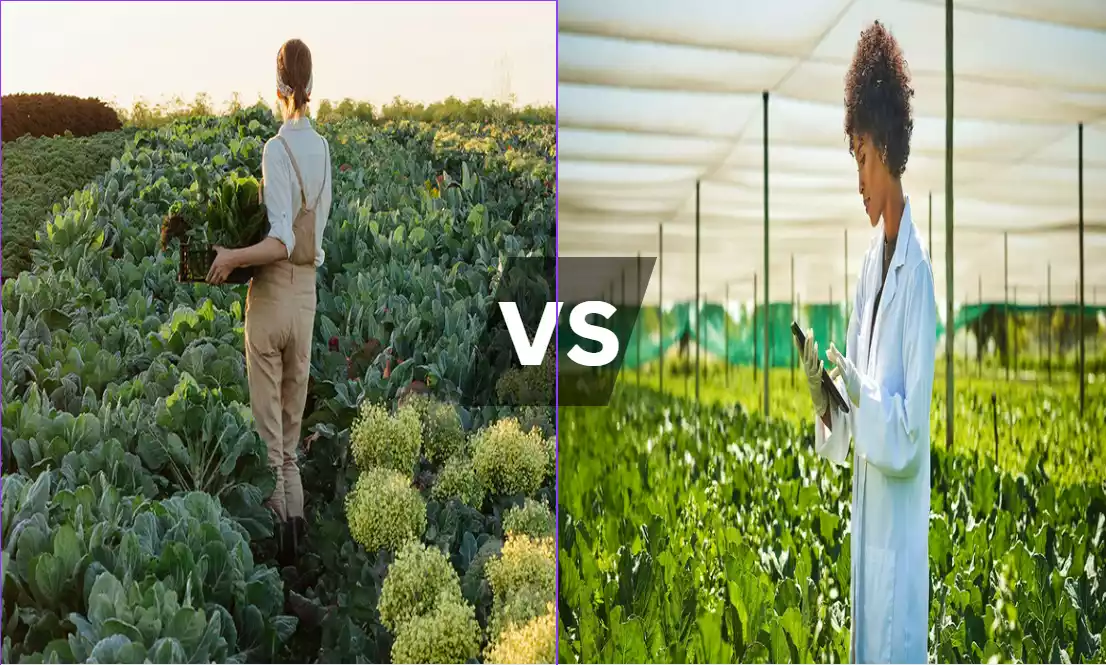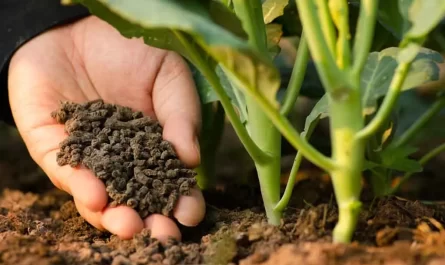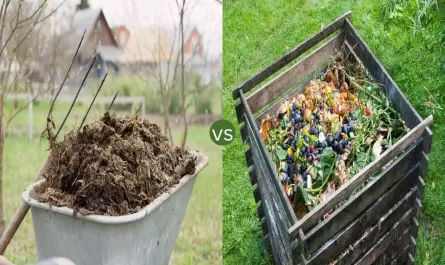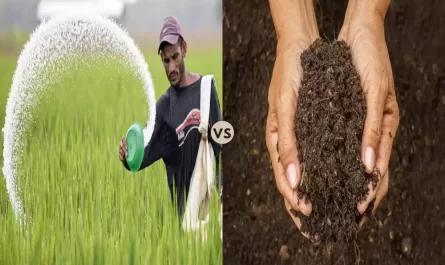Sustainable and Regenerative Agriculture are two farming approaches focused on growing food while caring for the environment. Sustainable Agriculture aims to farm in a way that doesn’t harm the land, people, or resources needed for future generations. It’s like farming responsibly, reducing waste, and using fewer chemicals.
Regenerative Agriculture takes it a step further by actively working to improve the land. It’s like helping the soil become healthier, allowing more diverse plants and animals to thrive, and even fighting climate change by trapping carbon in the ground.
Both methods want farms to last and be profitable, but they have different strategies. Sustainable aims to maintain what we have, while Regenerative aims to make things better than they were. Understanding these differences can help us choose the right approach for a healthier planet and better food.
Definition of Sustainable?
Sustainable means doing things in a way that helps our planet stay healthy and ensures that we have what we need both now and in the future. It’s like a promise to take good care of our Earth and its resources, such as land, water, and air.
Imagine if you had a big bag of candy, and you wanted it to last a long time. To do that, you’d eat just a few pieces each day instead of gobbling them all up at once. That way, you can enjoy your candy for many days.
In the same way, sustainable actions make sure we don’t use up everything too quickly. We use things wisely, so they’ll be available for our children and their children.
It’s like taking good care of a magical garden that keeps giving us fruits and flowers year after year, as long as we tend to it with love and responsibility. Sustainable choices help us live in harmony with nature, making the world a better place for everyone.
Definition of Regenerative Agriculture?
Regenerative Agriculture is a way of farming that goes beyond just not harming the Earth; it actively works to make the land healthier and more alive. It’s like when you plant seeds in a garden, and instead of just growing a few plants, you make the soil so rich and full of life that it becomes a super garden.
In Regenerative Agriculture, farmers use special techniques to improve the soil, like adding compost and using cover crops. This helps the soil become super healthy and able to grow more kinds of plants. It’s like giving the land a big, nutritious meal to make it strong.
Regenerative Agriculture also wants to create a home for lots of different creatures, like birds, insects, and tiny microbes that live in the soil. These creatures help the farm grow better and create a balanced ecosystem.
The goal is to make the farm thrive, and it’s like turning a regular field into a magical land where life flourishes, the soil becomes richer, and the environment gets healthier with time. It’s all about giving back to the Earth and making it a better place for the future.
Difference Between Sustainable and Regenerative Agriculture
Here’s a simplified comparison chart for Sustainable and Regenerative Agriculture:
| Aspect | Sustainable Agriculture | Regenerative Agriculture |
|---|---|---|
| Goal | Maintain resources for long-term care | Actively improve land and resources |
| Soil Health | Emphasizes responsible land use | Actively builds healthy, fertile soils |
| Biodiversity | Supports biodiversity but is not a primary focus | Actively promotes and enhances biodiversity |
| Carbon Sequestration | Limited focus on carbon capture | Actively captures and stores carbon |
| Economic Approach | Balances economic viability and sustainability | Seeks economic resilience and sustainability |
| Innovation | Steady-state practices | Embraces innovation and adaptation |
| Market Appeal | Appeals to eco-conscious consumers | Attracts sustainability-focused consumers |
| Ecosystem Impact | Positive impact on the environment | Positive impact actively restores ecosystems |
Why is Agriculture important to us Today?
Here are the key points about why agriculture is important to us:
- Food Source: Agriculture is where our food comes from, and without it, we wouldn’t have the meals we love.
- Material Supply: It provides materials like cotton for clothing and wood for building, making everything we wear and use possible.
- Job Creation: Agriculture creates jobs for many people, from farmers to those who transport and sell farm products.
- Environmental Care: Some farms take care of the land and nature by using special methods like planting trees and protecting wildlife, making the planet healthier and more beautiful.
- Innovation and Technology: Agriculture drives advancements in farming techniques and technology, making farming more efficient and productive.
- Cultural and Traditional Value: Many cultures have deep-rooted traditions associated with farming, making it a vital part of their heritage and identity.
Environmental Impacts of Sustainable and Regenerative Agriculture
Sustainable and Regenerative Agriculture are two ways of growing food. They have different effects on nature.
Sustainable Agriculture: This way of farming aims to be gentle on the environment. It’s like taking care of your toys so they don’t break. Sustainable farming tries to use fewer chemicals, not harm the land, and keep things going for a long time. It helps keep the air, water, and soil clean and healthy. The good part is it’s like making sure all the pieces in nature’s puzzle stay together.
Regenerative Agriculture: This is like nature’s superhero farming. It goes beyond just being gentle; it actively makes things better. It’s like giving the Earth a big, healthy meal. Regenerative farming improves the soil, helps plants and animals thrive, and even fights climate change by trapping carbon in the ground.
Both methods care about the environment, but sustainability keeps things safe, while regenerative makes them thrive. By understanding these farming ways, we can choose what’s best for our planet and for having good food to eat.
Biodiversity and Ecosystem Impact
Biodiversity as well as Ecosystem Effect” is like discussing the ways that nature’s vast family of animals and plants can benefit our planet. Think of it as a big puzzle with many different pieces. The more pieces you have, the better the picture looks.
When we farm, like in sustainable farming, we want to make sure there are lots of different plants and animals in our puzzle. This helps nature stay strong and healthy. Regenerative farming goes a step further by actively making nature even better.
But sometimes, farming can be like taking away puzzle pieces, and that’s not good for our world. We need to find a way for farming and nature to work together, like friends at a party.
So, biodiversity and ecosystem impact is all about making sure our world’s puzzle stays complete and beautiful, with many pieces and everyone having a great time at the party.
What are the Major Challenges of Sustainable and Regenerative Agriculture?
The major challenges of Sustainable and Regenerative Agriculture growth can be explained as follows:
- Transitioning Practices: Switching from traditional farming methods to sustainable and regenerative practices can be challenging. Farmers may need to learn new techniques and adapt to different approaches, which can take time and effort.
- Initial Investments: Some regenerative practices, like building healthy soil, can require upfront investments. Farmers may need financial support to make these changes, which can be a hurdle for many.
- Education and Awareness: Both farmers and consumers need to understand the benefits of sustainable and regenerative agriculture. Raising awareness and providing education about these practices is vital.
- Balancing Productivity and Profitability: Some sustainable and regenerative practices might initially reduce crop yields or increase costs. Farmers need to find ways to balance the need for healthy farming with making a living.
- Climate and Weather Challenges: Climate change can bring unpredictable weather patterns that affect farming. Sustainable and regenerative systems must adapt to these changes.
- Policy and Regulation: Government policies and regulations can either support or hinder the growth of sustainable and regenerative agriculture. Advocating for supportive policies is a challenge.
- Scaling Up: Expanding sustainable and regenerative practices to meet global food demands is a challenge. Finding ways to make these methods work on a larger scale without losing their benefits is essential.
- Market Access: Connecting sustainable and regenerative farmers with markets and consumers willing to pay for environmentally friendly products can be challenging.
- Research and Innovation: Continuous research and innovation are needed to improve and refine these farming methods and address specific challenges.
- Consumer Preferences: Convincing consumers to choose sustainably and regeneratively produced goods can be a challenge. Many people are used to traditional farming practices and may not be aware of the benefits of these alternatives.
Advantage and Disadvantage
Advantages of Sustainable Agriculture and Regenerative Agriculture
Environmental Benefits:
- Sustainable Agriculture: Reduces soil erosion, minimizes chemical use, and protects natural resources, leading to improved soil health and cleaner water.
- Regenerative Agriculture: Actively improves soil quality, promotes biodiversity, and captures carbon, contributing to climate change mitigation.
Enhanced Soil Health:
- Sustainable Agriculture: Promotes responsible land use and conservation, which can lead to healthier soils over time.
- Regenerative Agriculture: Focuses on building rich and fertile soils, creating a thriving environment for plants and beneficial microorganisms.
Biodiversity Conservation:
- Sustainable Agriculture: Encourages practices that support diverse ecosystems, protecting various species.
- Regenerative Agriculture: Actively promotes biodiversity, restoring habitats and fostering a wide range of plant and animal life.
Carbon Sequestration:
- Sustainable Agriculture: May sequester carbon in the soil to some extent.
- Regenerative Agriculture: Actively works to capture and store carbon in the soil, helping combat climate change.
Long-Term Sustainability:
- Sustainable Agriculture: Focuses on balancing economic interests with environmental stewardship, ensuring farms can continue to produce over the long term.
- Regenerative Agriculture: Aims for economic resilience while investing in long-term soil and ecosystem health.
Innovation and Adaptation:
- Sustainable Agriculture: Offers steady and predictable farming methods.
- Regenerative Agriculture: Embraces innovation and adaptation, fostering experimentation and new techniques.
Disadvantages of Sustainable Agriculture and Regenerative Agriculture
Initial Investments:
- Regenerative Agriculture: Some practices can require significant upfront investments, which might be challenging for small-scale farmers.
Transitioning Challenges:
- Both Methods: Transitioning from traditional farming practices to sustainable and regenerative techniques can be difficult and may reduce short-term yields.
Balancing Profitability:
- Sustainable Agriculture: Achieving economic viability while following sustainable practices can be a challenge.
- Regenerative Agriculture: Initial investments may take time to provide returns.
Market Access:
- Both Methods: Finding markets and consumers willing to pay for sustainably and regeneratively produced goods can be challenging.
Policy and Regulation:
- Both Methods: Government policies and regulations may not always align with or support sustainable and regenerative agriculture practices.
Awareness and Education:
- Both Methods: Raising awareness and educating farmers and consumers about the benefits of these methods is essential but can be time-consuming.
Climate and Weather Challenges:
- Both Methods: Unpredictable weather patterns due to climate change can impact farming.
Scaling Up:
- Both Methods: Expanding these practices to meet global food demands while maintaining their benefits is a challenge.
Consumer Preferences:
- Both Methods: Convincing consumers to choose sustainably and regeneratively produced goods can be difficult due to a lack of awareness.
Conclusion
Sustainable Agriculture is like responsible farming. It means using the land and resources wisely to grow food without harming the environment. It’s all about making sure farms can keep going for a long time, just like taking good care of toys.
Regenerative Agriculture takes farming to the next level. It’s like giving the land a super boost to become even healthier. Farmers using this method don’t just maintain; they improve the soil, bring back lots of creatures, and help fight climate change. It’s like turning a regular garden into a magical one that keeps getting better.
Sustainable keeps things safe, while Regenerative makes them thrive. Both aim to protect the Earth and make food, but they have different approaches. By understanding these, we can choose the right way to care for our planet and have yummy, healthy food for a long time.




